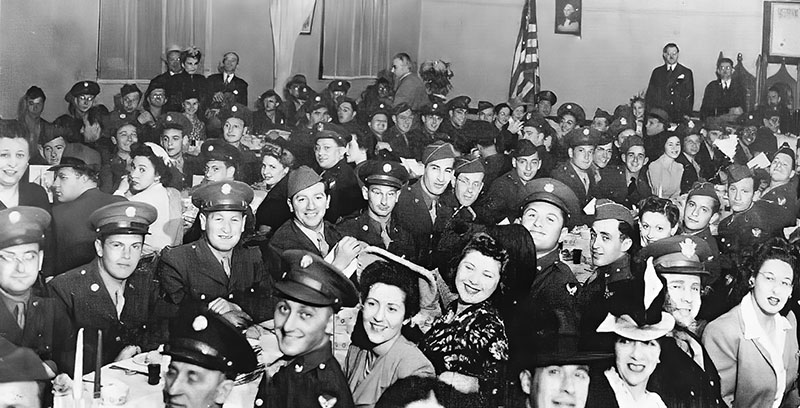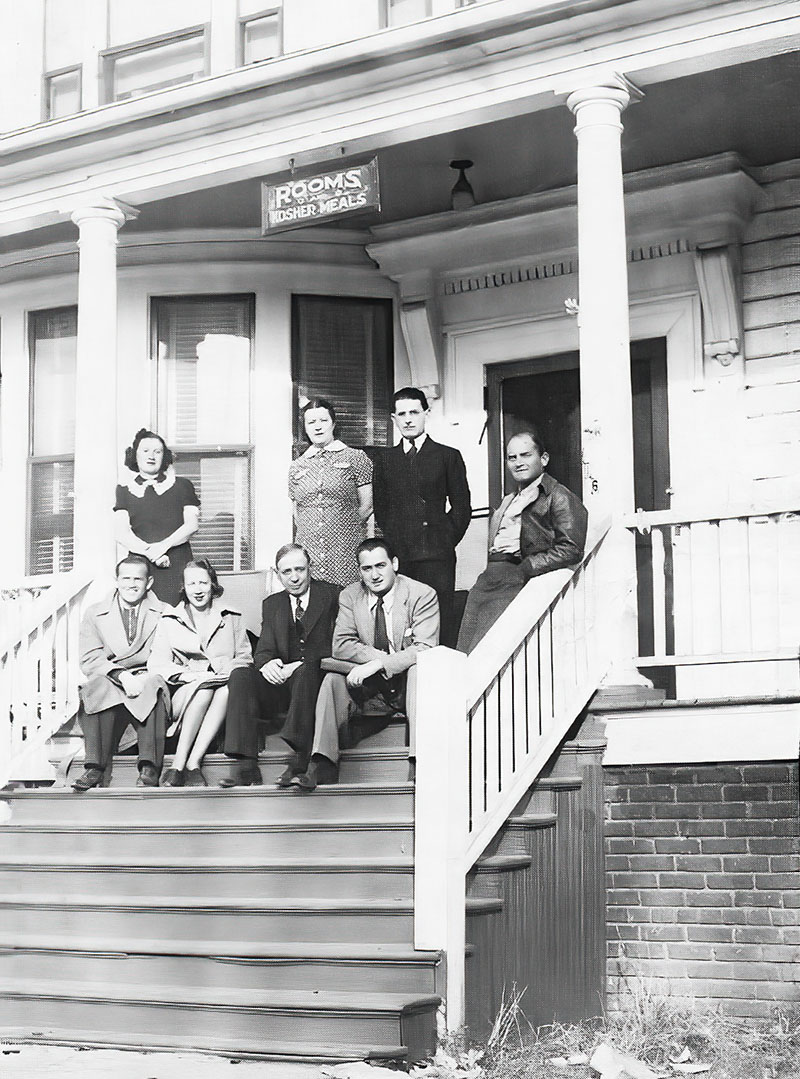Orthodox Jews get “Reno-vated” during the divorce boom.
May 1931 was a significant time in Reno’s history. That was when Reno became the divorce capital of America, and all you needed was a six-week residency to be newly “Reno-vated.” Celebrities and average folks alike whiled away their time at posh restaurants, nightclubs, swanky shops, and dude ranches in the Reno area. By the end of the 1930s, 30,000 divorces had been granted.
For the Jews among these pre-divorce new residents, options began to spring up to satisfy their religious dietary needs.
Rooming Houses to the Rescue
For observant Jews, it could be tricky to find a kosher meal. Rabbi Harry Tarlow (Hirsh Opoczynski prior to becoming a naturalized citizen) came to the rescue with boarding houses that served kosher meals to area residents and reserved guests alike. Tarlow was a religious Zionist, born in Poland, who immigrated to Israel. His wife, Pearl, was related to the Jacobses, a prominent Reno family, and the rabbi was encouraged to move here to serve the Jewish community.
In 1931, the Tarlows arrived with their son, Haskell. Sons Gerald and Mervin were born in Reno. The rabbi was offered a salary of $1,200 a year by Reno’s Temple Emanu-El. Gratuities from weddings and funerals helped pay the bills, but the liberal divorce laws provided an even greater income. The family boarded Jewish divorce seekers and maintained a kosher kitchen. Eventually, the Tarlows operated two boarding houses: The first was at 106 W. Fifth St., one block south of the Temple Emanu-El, which they then sold to purchase a larger one at 316 S. Center St. It was conveniently located a short distance from the courthouse. Classified ads ran from 1936 through 1940 describing the rooms as “Excellent — steam, heated rooms, and kosher board.”
Family Foods
Son Mervin Tarlow and his wife, Frances, share memories of the rooming house’s food traditions. He describes how his mother, Pearl, did most of the cooking, strictly following kosher rules. This included no cooking on the Sabbath. Meat was part of the diet since the rabbi was a trained shochet, a person who is officially licensed by rabbinic authority to slaughter animals in accordance with Jewish laws. The Tarlows had a locker at an icehouse on Fourth Street where they could store the family’s meat. Occasionally, the rabbi would slaughter a chicken for someone else.
Mervin recalls that he helped make gefilte fish. The house had a closed, screened-in porch off the kitchen, with a table that had a permanently attached grinder. His mother would buy the fish at the market, and they would grind it to prepare it for poaching. This was a regular Sabbath dish, unlike today when it is more common to eat it only on Passover (April 22 – 30 this year).

Frances said that her mother-in-law Pearl made the best roasted chicken, and she has spent years trying to replicate it. Pearl also prepared a wonderful applesauce cake containing raisins. The harvest brought homemade pickles and pickled tomatoes. The Tarlows occasionally featured p’tcha, a classic Ashkenazic dish made from jellied calves’ hooves and embedded with boiled eggs. Pearl picked up recipes from the house’s East Coast boarders, and some would help with the food preparation. Mervin recalls a baker who got up at 4 a.m. to help bake. Pearl and other women also served local Jewish servicemen at Passover seders during the 1940s.
The Tarlows moved to Los Angeles in 1953.
Other Kosher Restaurants
The kosher story doesn’t end with the Tarlows. On July 3, 1931, Reno Kosher Restaurant opened at 358 N. Virginia St. It specialized in Romanian cooking and operated under the management of Louis Dinitz and Herman Lissan. Lissan sang Russian melodies at the premiere. Only doors away, on the same day, the Vienna Delicatessen opened at 24 E. Second St. It boasted, “We are serving home-cooked luncheons and dinners, percolated coffee … all kosher meat products U.S. inspected.”
These enterprises were short-lived. Kosher-style restaurants took their place, and it was common to find ham, alongside kosher pastrami, on a menu. Over the years, the rooming houses and the impressive synagogue have been demolished. Gefilte fish and p’tcha are distant memories. Happily, the popularity of a good bowl of chicken soup and a heaping corned beef sandwich lives on.


